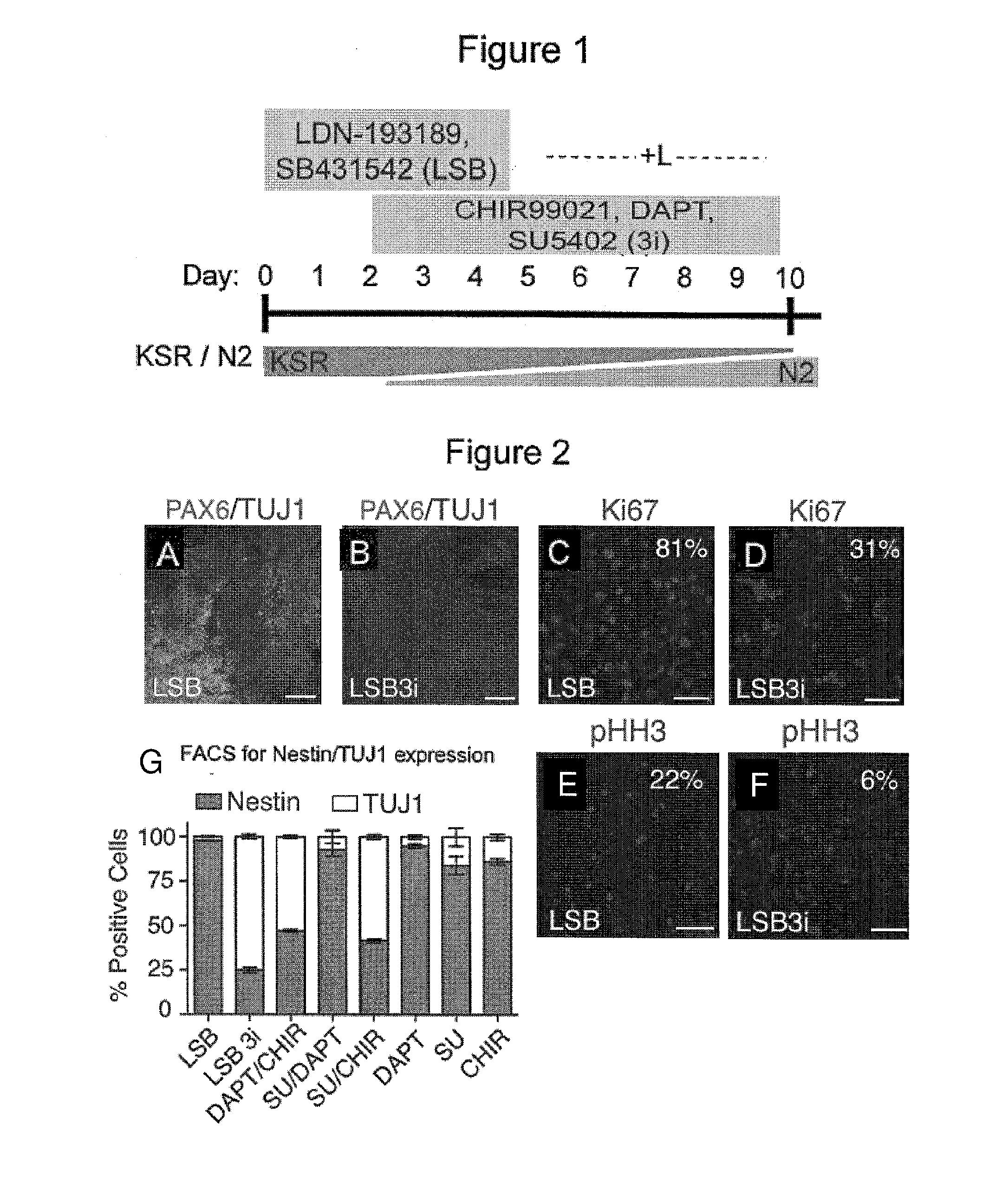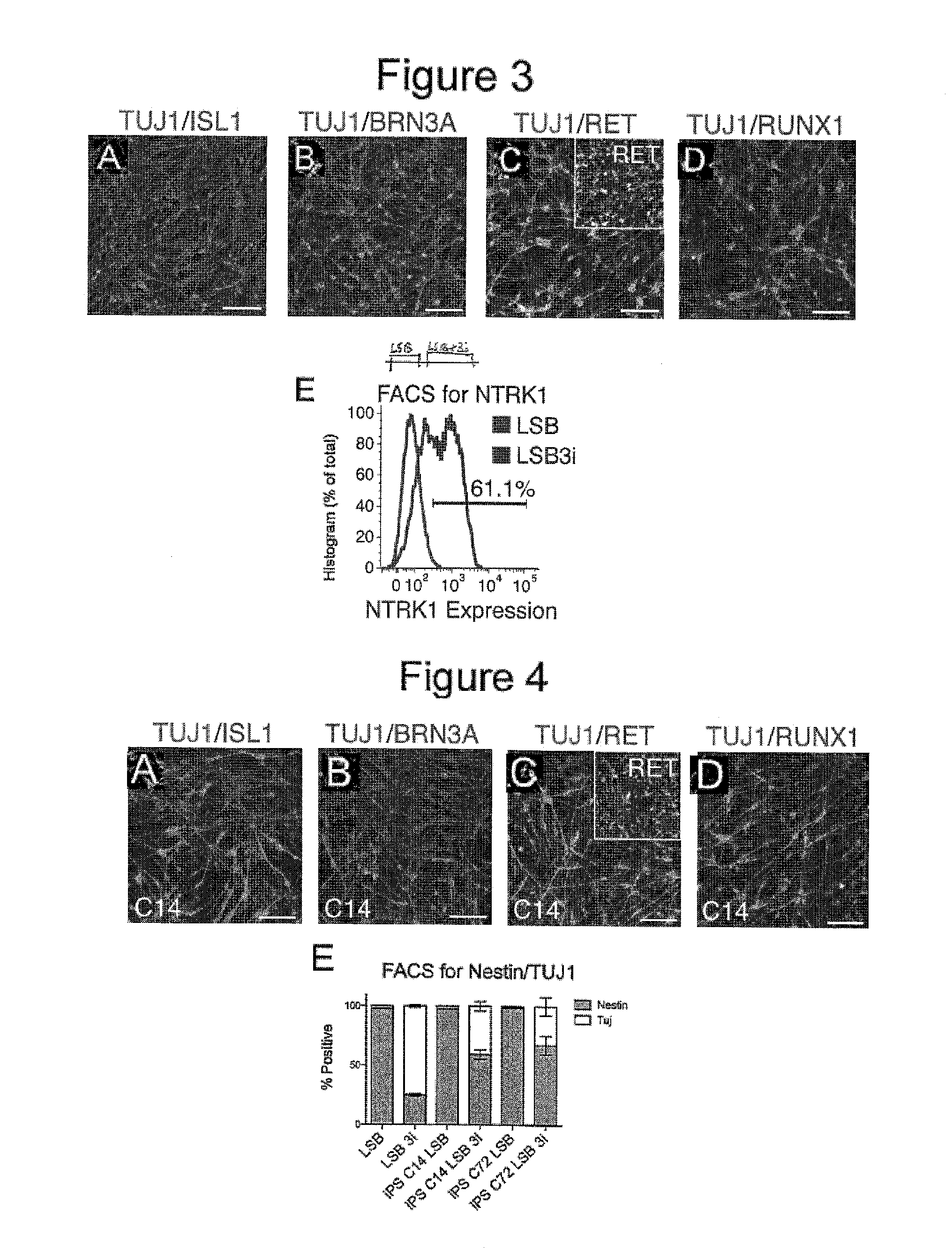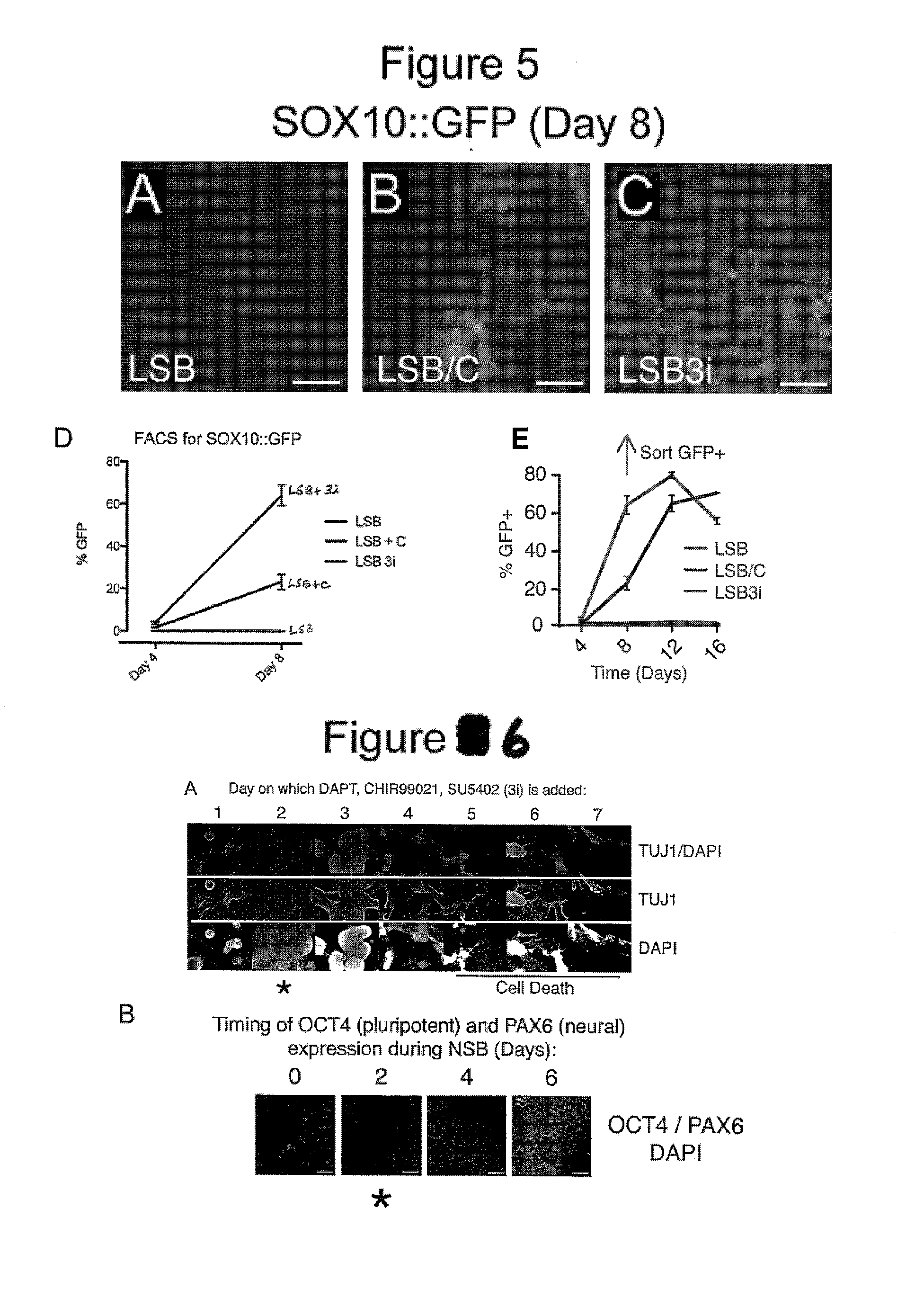Method of nociceptor differentiation of human embryonic stem cells and uses thereof
a technology of human embryonic stem cells and nociceptors, applied in the field of stem cell biology, can solve the problems of reducing the activity of signal molecule activity, reducing the level of smad protein, and preventing downstream smad activation.
- Summary
- Abstract
- Description
- Claims
- Application Information
AI Technical Summary
Benefits of technology
Problems solved by technology
Method used
Image
Examples
example i
Materials And Methods
[0271]The following examples describe exemplary materials and methods used during the development of the present inventions.
Cells and Culture Conditions.
[0272]Human embryonic stem cell (hESC) cell (WA-09; passages 32-50) and hiPSC lines (C14, C72; passages 10-20) were cultured with mouse embryonic fibroblasts (MEFs, Globalstem, Rockville, State of Maryland, United States of America (USA)) pre-plated at 12-15,000 cells / cm2. Human induced pluripotent stem cell (hiPSC) lines were generated as reported (Papapetrou, et al., Proc Natl Acad Sci USA 106, (2009), herein incorporated by reference). Medium containing Dulbecco's Modified Eagle Medium (DMEM) / F12, 20% knockout serum replacement, 1 mM L-glutamine (Invitrogen, Carlsbad, State of California, USA), 100 μM MEM non-essential amino acids (Invitrogen), and 0.1 mM β-mercaptoethanol (Invitrogen) was made. 6 ng / ml Fibroblast growth factor 2 (FGF-2, R&D Systems, Minneapolis, State of Minnesota) was added after sterile fi...
example ii
Contacting Human Pluripotent Stem Cells with SB431542 and LDN-193189 (LSB) Produced Neural Lineage Cells
[0282]The following example describes exemplary methods for providing cells of a neural lineage for use during development of the present inventions.
[0283]Dual SMAD inhibition was previously used as a rapid and highly effective method for inducing one type of neural lineage cells from hPSCs (Chambers, et al., Nat Biotechnol 27, (2009), herein incorporated by reference). These neural lineage cells induced by molecules including Noggin, had a default pathway that allowed development into central nervous system cells, i.e. neural cell fate. Follow up studies reported the use of a small molecule dorsomorphin (DM) instead of Noggin, that at least in part produced similar cells with differences in consistency of cultures (Kim, et al., Robust enhancement of neural differentiation from human ES and iPS cells regardless of their innate difference in differentiation propensity. Stem Cell Re...
example iii
Screening Small Molecules Using Neuronal Lineage Cells of the Present Inventions Resulted in Compounds that Produced PAX6 Low and TUJ1 High Neuronal Cells
[0286]The following example describes using exemplary cells of a neural lineage from Example II for screening small molecule candidate compounds for use in directed differentiation.
[0287]Specifically, in the context of dual SMAD inhibition (LSB), i.e. human ES cells were first treated with LSB (LDN-193189 and SB431542) for screening candidate compounds (i.e. small molecules) under approximately 400 conditions in order to find combinations of small molecules that might accelerate the acquisition of postmitotic neuron markers starting from human ES cells. Candidate compounds were chosen from molecules that targeted (altered) cell signaling pathways known to be important and frequently used in developmental studies in order to determine cell fates (for example, signaling pathways such as FGF, Notch, WNT, SHH (Sonic Hedgehog), etc.) fo...
PUM
| Property | Measurement | Unit |
|---|---|---|
| time | aaaaa | aaaaa |
| time | aaaaa | aaaaa |
| Concentration | aaaaa | aaaaa |
Abstract
Description
Claims
Application Information
 Login to View More
Login to View More - R&D
- Intellectual Property
- Life Sciences
- Materials
- Tech Scout
- Unparalleled Data Quality
- Higher Quality Content
- 60% Fewer Hallucinations
Browse by: Latest US Patents, China's latest patents, Technical Efficacy Thesaurus, Application Domain, Technology Topic, Popular Technical Reports.
© 2025 PatSnap. All rights reserved.Legal|Privacy policy|Modern Slavery Act Transparency Statement|Sitemap|About US| Contact US: help@patsnap.com



